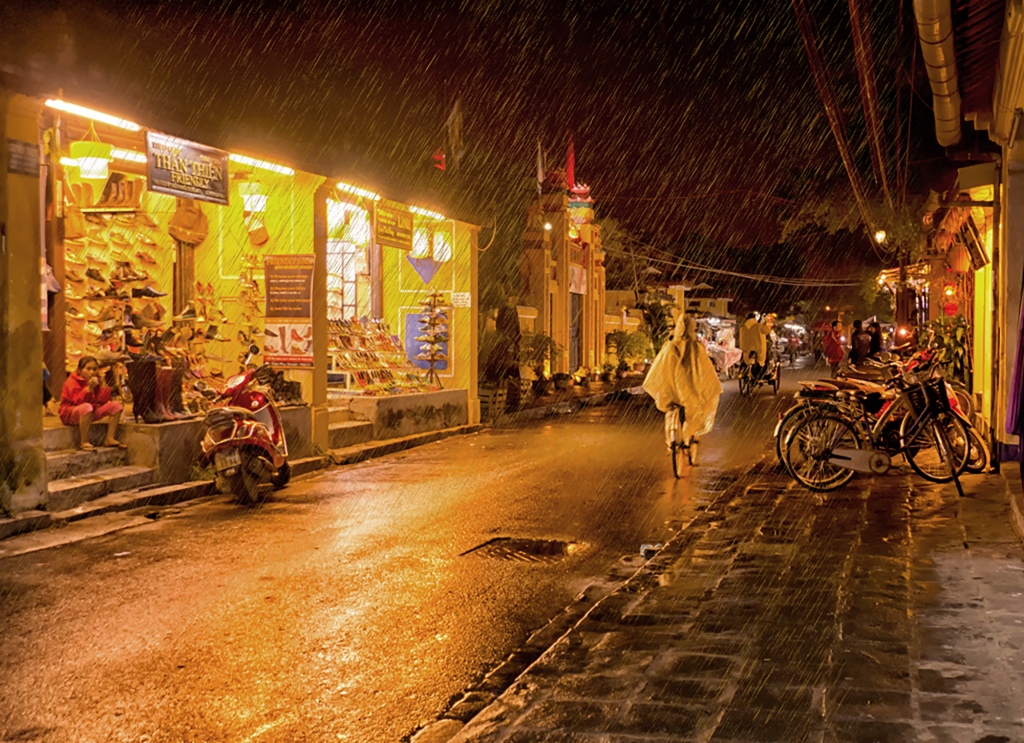Travel photography always creates a sense of urgency in me. When I arrive at a new place I can easily be overwhelmed with awe. Sights, sounds, smells and fatigue all conspire to overpower my brain. My urge is to try and capture it all, and it takes conscious effort to slow down and organize my thoughts. The places I’ve been privileged to see are wildly amazing and it’s a challenge to bring home images that match my experience. Itʼs also a challenge to bring home images someone else hasnʼt already taken – to find something original at places like the Taj Mahal.
I know my equipment and use it often – not just my cameras, but lenses, filters, flashes, etc. When I buy something, I learn how to use it. My camera must be an extension of me so that my reactions can be instinctively right. There’s a lot to consider when shooting; learning how to use equipment can’t be on my mind.
Before I leave, I sort through everything and decide what Iʼm going to take with me. Next, I start using it. I make time to go out and take photographs. I run through different scenarios that I might encounter and make sure that using my photography tools is second nature to me. I refresh my mind on how things work if I havenʼt been using them for a while. Good examples might be my flash attachment or specialized filters.
Digital gives us many great gifts in photography but the ease of feedback has to be near the top. Live view and software programs give me the ability to analyze and make changes. Trying different settings and approaches broadens choices and helps capture distinctive views that tell my story. I study other people’s images, the ones that inspire me, and figure out how they move into things. I don’t try to copy what they do. I try and learn how they see things and it helps me expand my own vision.
When I happen into a scene that I want to shoot, my mind runs through a series of questions, “What’s the story here? Who or what is the star? Are there leading lines, shapes or patterns I can use? Is there a ‘moment’ about to happen? Where do I need to be?” What is the light doing? I think before I shoot. I may never pass this way again. I certainly will never be back under the exact same circumstances so I want to make what I shoot really counts.
Every photograph I take is the expression of my inner voice bursting to get out. Photography is visual language. When I want to say something with words, I formulate them to get my point across. When things are blurted without thought, often the point of what I want to say is lost. The same is true with visual language. If it is to succeed, thought must go into our photography procedure.
There are many things to consider as we start this decision-making process. The camera flattens what the eye sees in our three-dimensional world and compresses it into two dimensions. Light is one of our most powerful tools to add back part what the camera takes away. Don’t ignore perspective. Most photographs are shot from eye level. When I gain a different perspective, I see the world change.
Travel brings all kinds of restrictions. I think about what I have to work with, not what I wish I had. Embrace constraints – interesting photography happens because of them. I can battle the weather, the light or the wrong lens and go home empty-handed. Or I can embrace the limitations and work with them, finding an image I might never have suspected was there.
I always look behind me. It’s surprising how often the best shots are at my back. Look around and be aware. Look around and see what’s coming. Then move into position.
Good photographs elicit emotions. When I consider the lines, light, placement, framing and all the other choices I have, my images will more likely express not only what I saw, but also how I felt. Photographs speak to viewers because they tell a story. It’s important to choose the correct elements to make that story intentional and evocative.
The choices of how to capture a subject are almost limitless. When traveling in Cambodia, I came across a lady carrying water from a lake. It was sunset. It didnʼt take much thought to frame and shoot the photograph below.
Itʼs a lovely shot. But there were a lot of people with cameras and phones stopping to take the same photograph. Was there another choice to capture the magic of this moment – the swish of the water – a bit of her dance? For me, the answer was yes.
The gifts of being a traveler with a camera are enormous. We see so much more than other travelers. We note details, light and people; we look deeply. Even without our photographs we bring home richer experiences. We don’t just pass through. We become part of the environment.
A photograph is magic. We can capture a moment in time and subsequently savor it for as long as we want. When it’s done well, others are delighted that we share our work and let them journey with us.
As we think about packing our gear, remember the most valuable tool in our tool box is ourselves. Keep your head, think before you click the shutter, bring home photographs you love; and happy shooting!
_______________
Please visit roxanneoverton.slickpic.site — where you will find more photography and information on my instructional and travel series photography books.











